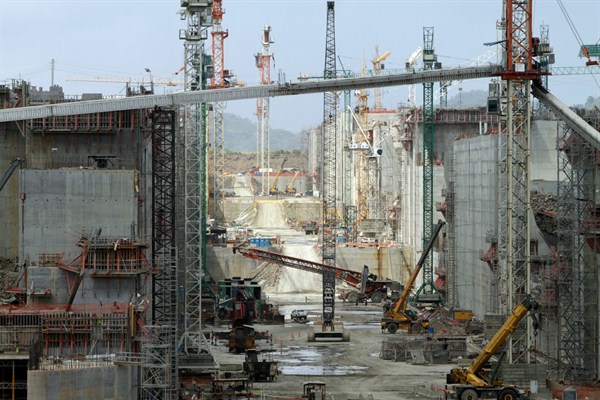The $5.25 billion expansion of the Panama Canal, which officially opened in late June, tripling the size of vessels the canal can accommodate, is about more than just bigger ships. Unlike in 1914 when the opening of the canal made unimaginable trade routes possible, boosting the economies of the United States and many others, the expanded canal may have the biggest impact on Panama’s own economy. But the potential rewards also come with major risks.
The canal’s ability to handle much larger ships will greatly facilitate shipping between the Pacific and Atlantic oceans. Among other things, U.S. grain exports from the Gulf coast will become more competitive in Asian markets, and ships carrying American shale-derived liquefied natural gas will now be able to use the canal to reach rapidly growing Asian markets. Less obvious, but no less important, the canal will lower transportation costs for U.S. supply chains and distribution centers.
Anticipating increased revenues from the canal’s expansion, the Panamanian government created the Panama Savings Fund, a sovereign wealth fund currently valued at about $1.39 billion. The government plans to channel annual payments made by the Panama Canal Authority in excess of 3.5 percent of GDP to the fund, which it could use to compensate for economic downturns, as well as to respond to natural disasters and pay off public debt.

